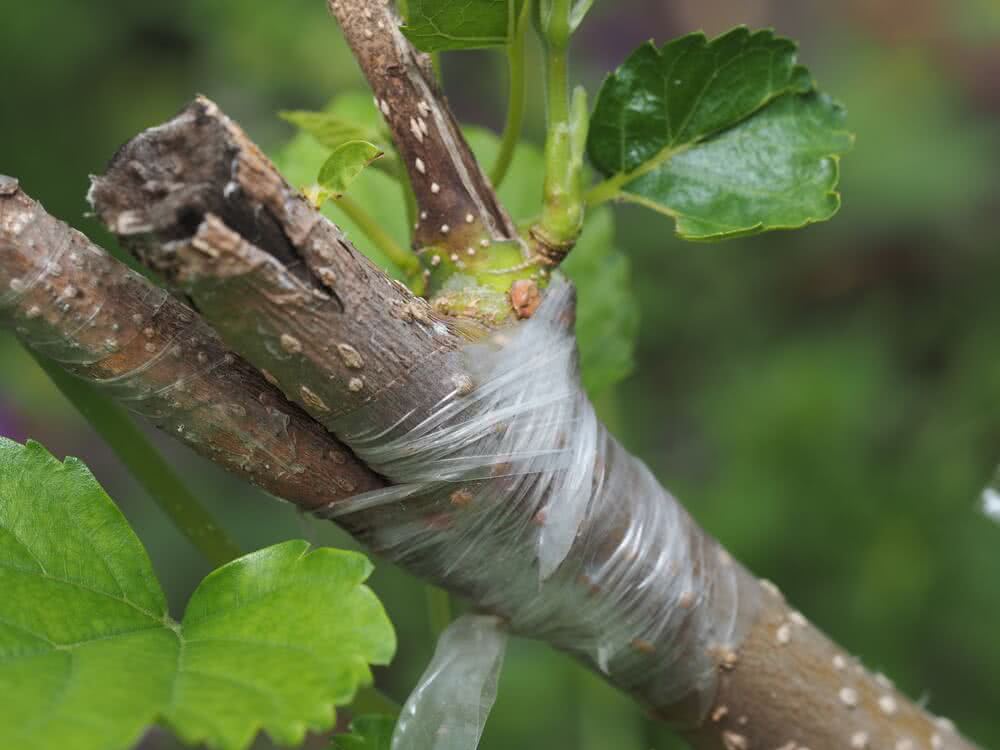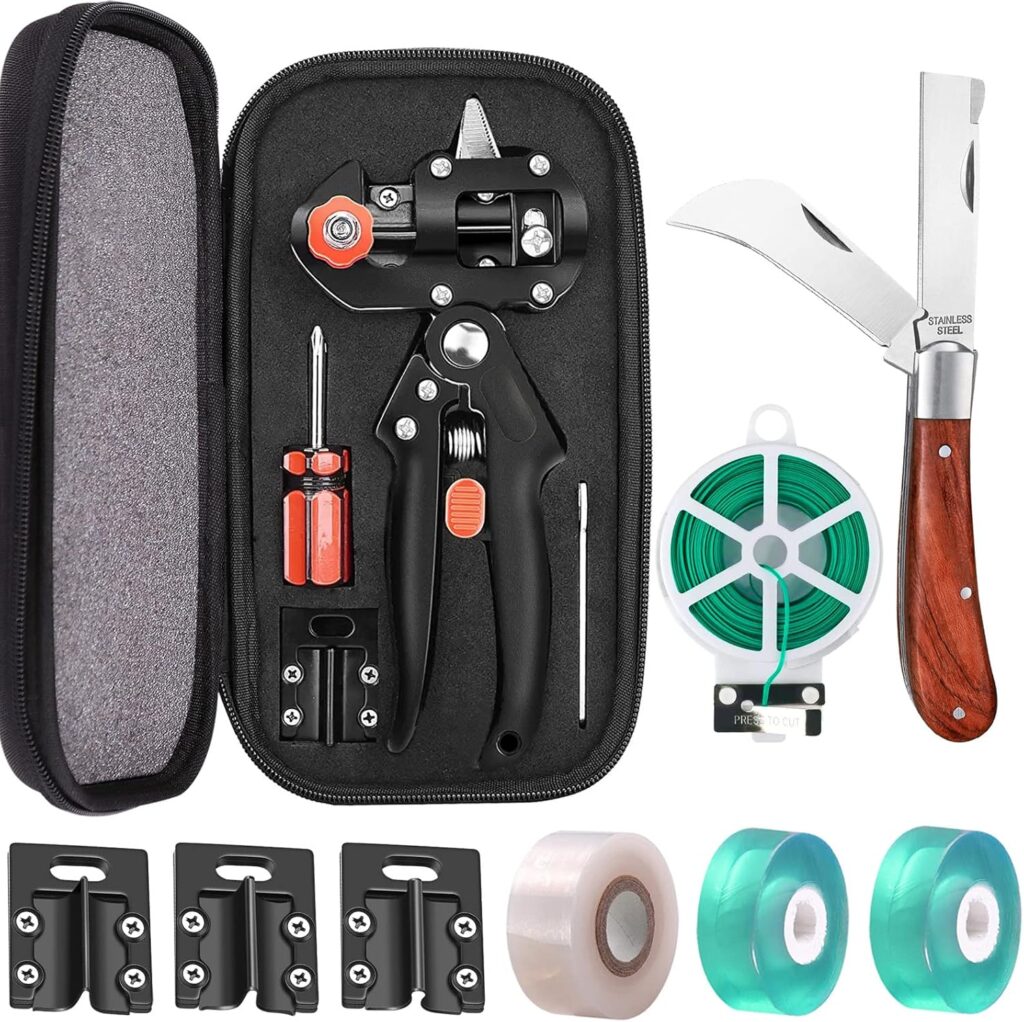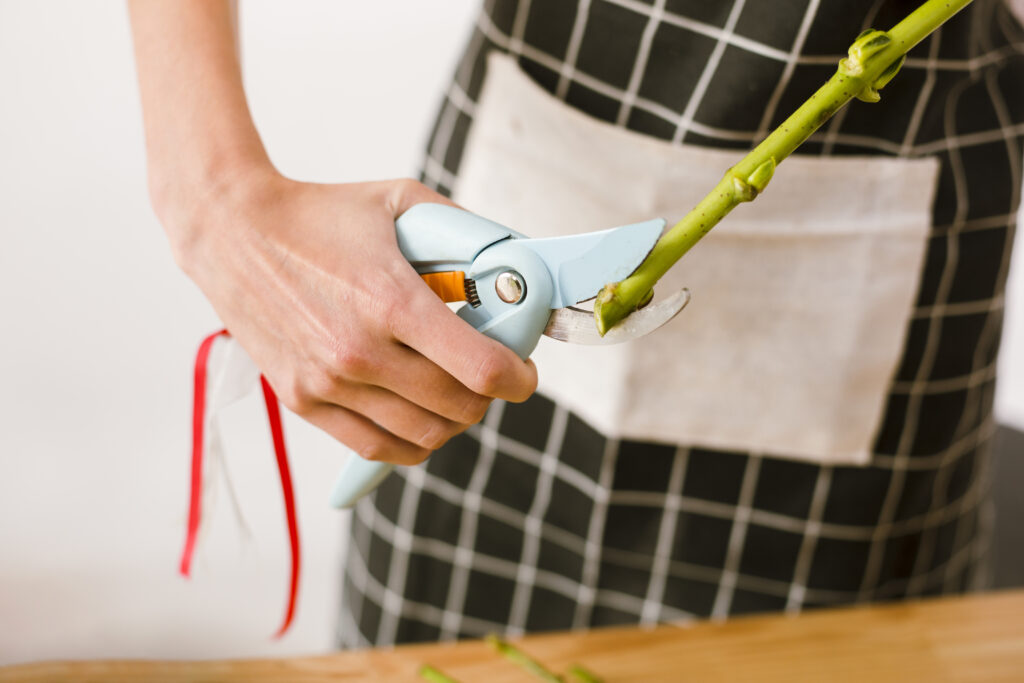Why Grafting Is a Game-Changer for Plant Enthusiasts?
Grafting is a fascinating horticultural technique that allows gardeners to join two different plants, creating a stronger and healthier hybrid. Think of it as matchmaking for plants instead of swiping right, you make precise cuts and connections. Whether making a multi-fruit tree or repairing a damaged specimen, grafting offers possibilities beyond traditional propagation methods.
The Magic of Combining Plants: Going Beyond Traditional Techniques
Most gardeners know about planting seeds or cuttings, but grafting is special. It combines desirable traits from two plants, such as a strong root system and vibrant flowers. The result is unique, custom plants that are often more resilient and productive. Imagine a tree that produces five types of apples or a rose bush with colourful petals. This isn’t magic; it’s grafting!
Understanding Grafting: A Quick Refresher

What Is Grafting? A Simple Breakdown
It is a technique where a scion, a live cutting from one plant, is attached to the rootstock of another. This process creates a single plant that benefits from the rootstock’s strength and the scion’s desired traits, such as fruit or flowers.
Key Benefits: Healthier, Hardier, and More Unique Plants
It isn’t just about novelty. It offers tangible benefits for plant health and productivity:
- Disease Resistance: Choosing a disease-resistant rootstock, can give vulnerable plants a fighting chance.
- Increased Yield: Grafted fruit trees often produce more fruit, faster.
- Space Efficiency: Multi-grafted plants can save garden space by combining several varieties into a single plant.
The Science Behind Grafting: How It Works at a Biological Level
It is a technique that connects the vascular tissues of two plants, allowing for nutrient transport. Proper alignment of the cambium layers in the scion and rootstock creates a strong connection for efficient nutrients and transport of water. As a result, the grafted plant functions as a single organism, combining the best traits of both parent plants.
Essential Tools and Materials for Grafting

Must-Have Tools: Knives, Tape, and Beyond
Successful grafting requires precision, and the right tools make all the difference. Key tools include:
Grafting Knife: For clean, precise cuts.
Grafting Tape or Wax: To secure and seal the graft.
Pruners: For preparing scions and rootstocks.
Rubber Bands or Clips: To hold the graft in place during healing.
Choosing the Right Rootstock and Scion: Setting Yourself Up for Success
Not all plants are compatible with grafting. Choose rootstocks that are:
Vigorously Healthy: To support strong growth.
Compatible with Your Scion: Compatibility depends on species and, sometimes, genus.
Adapted to Your Growing Conditions: Consider climate, soil type, and disease resistance.
Pre-Grafting Prep: Cleaning, Sharpening, and Organizing
Before grafting, sterilize all tools to prevent disease transmission. Sharp tools make clean cuts, which promote faster healing. Have all materials ready and a clear workspace to avoid fumbles during the delicate process.
Grafting Techniques to Try
Approach Grafting: Connecting Two Independent Plants
This involves bringing two plants together without cutting them away from their roots. This technique is great for creating living bridges or combining plants that are difficult to graft through traditional methods. Over time, once the graft has been taken, you can sever one of the original root systems if desired.
Bridge Grafting: Repairing Damaged Trees Like a Pro
When a tree’s bark is damaged by frost or animals, bridge grafting can restore nutrient flow. Grafting small scions over the wound creates a “bridge” that helps the tree recover and survive.
Bud Grafting: Adding Multiple Varieties to a Single Plant
It involves using a single bud instead of a complete scion. This technique is useful for adding various fruit varieties to a single tree or creating decorative rose bushes with multiple colours. It is a quick and effective method that requires less material than other grafting techniques.
Inarch Grafting: Reviving Trees with Damaged Root Systems
This technique is often used when a tree’s root system is compromised. New saplings are grafted onto the damaged tree, allowing them to provide additional nutrients and support. This method can extend the life of a tree and improve its overall health.
Whip and Tongue Grafting: Perfect for Small Scions
Whip and tongue is a precise method that creates a strong graft union. It involves matching cuts on the scion and rootstock and fitting them together like puzzle pieces. This method is ideal for small, flexible scions and offers a high success rate.
Tips for Success: Making Your Grafts Thrive
Creating the Perfect Union: How to Make Clean, Precise Cuts
A successful graft begins with clean cuts. To ensure optimal healing, it is vital to use a sharp knife. A clean cut prevents ragged edges that can compromise recovery. Align the cambium layers carefully, where the critical vascular connection forms.
Proper Tying and Sealing: Avoiding Graft Failure
Secure the graft tightly with grafting tape or rubber bands, but avoid cutting off circulation. Use grafting wax or sealant to prevent moisture loss and protect against pests and diseases.
Post-Grafting Care: Watering, Fertilizing, and Monitoring
After grafting, keep the plant well-watered and provide balanced nutrition. Regularly inspect the graft for signs of success or failure, such as new growth or scion wilting.
Common Challenges and How to Overcome Them
Dealing with Graft Incompatibility: What to Do When Things Don’t Match
Not all grafts take, and incompatibility can be a major culprit. If a graft fails repeatedly, try a different rootstock or scion combination or experiment with a different technique.
Recognizing and Treating Graft Failure: Signs to Watch For
Graft failure can result in wilting, discolouration, or detachment at the graft site. If this occurs, remove the failed graft, allow the plant to heal, and try again with fresh materials.
Pests and Diseases: Protecting Your Grafted Plants
Grafted plants can be vulnerable to pests and diseases, especially at the graft union. Inspect regularly and treat with appropriate pesticides or organic solutions as needed.
Creative Grafting Projects for Unique Plant Lovers
Grafting Different Fruit Varieties on One Tree: The Fruit Salad Tree
A fruit salad tree is a marvel, one tree that produces multiple fruits! By grafting different scions onto a single rootstock, you can enjoy a variety of fruits from a single plant, perfect for small gardens or urban spaces.
Creating Multi-Colored Rose Bushes with Bud Grafting
Budding can transform a simple rose bush into a rainbow of blooms. Adding buds of different rose varieties creates a bush that offers a kaleidoscope of colours throughout the season.
Combining Ornamental and Edible Plants for a Functional Landscape
For a garden that is both beautiful and bountiful, consider grafting edible plants onto ornamental ones. This maximizes your garden’s output and presents an unexpected element of surprise.
Final Thoughts
Advanced techniques open up a world of horticultural creativity and problem-solving. Whether repairing a cherished tree or crafting a one-of-a-kind plant, it offers boundless opportunities to experiment and innovate. Embrace the adventure, and don’t hesitate to share your successes and lessons learned with the gardening community. Happy Gardening!


